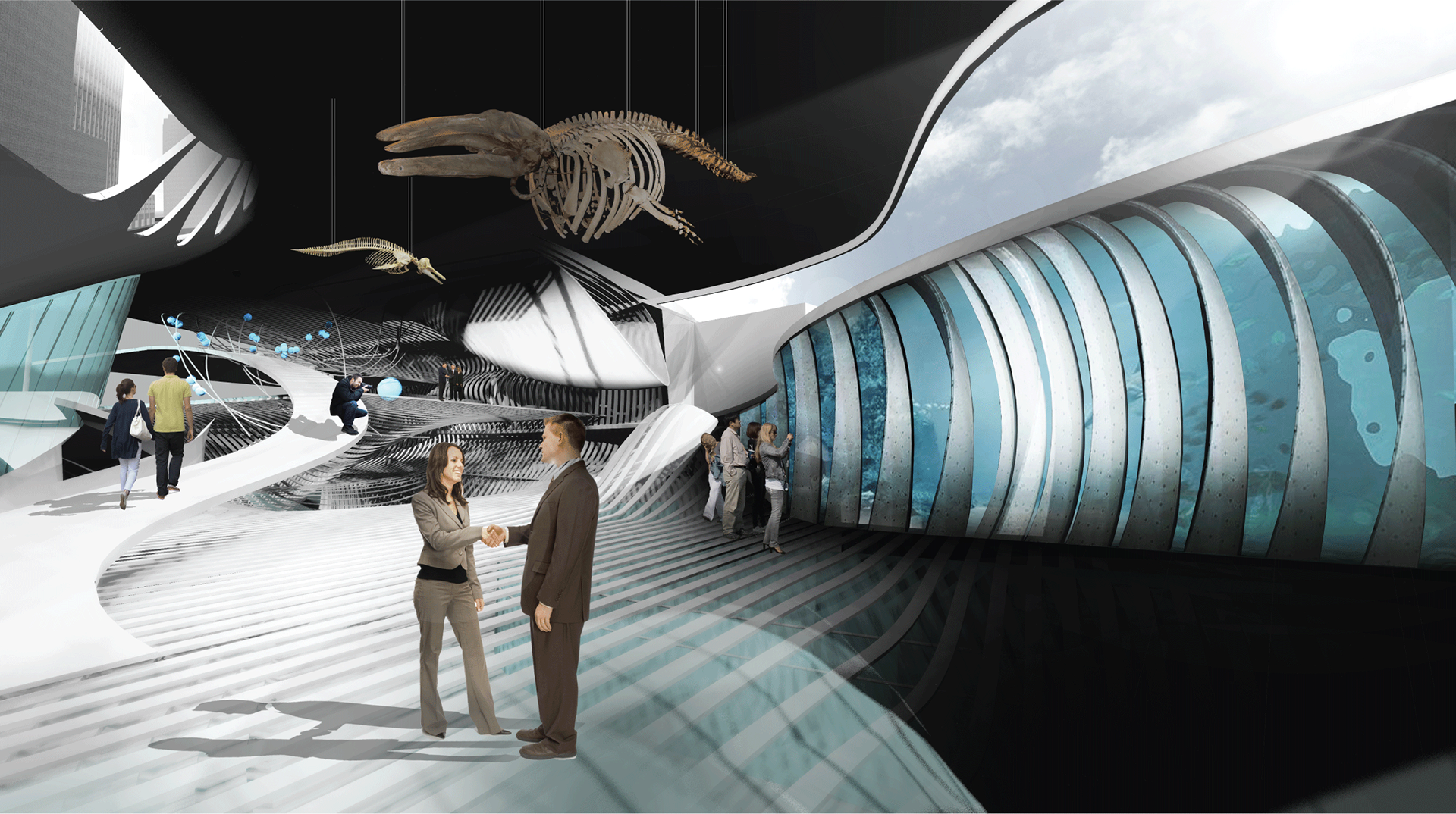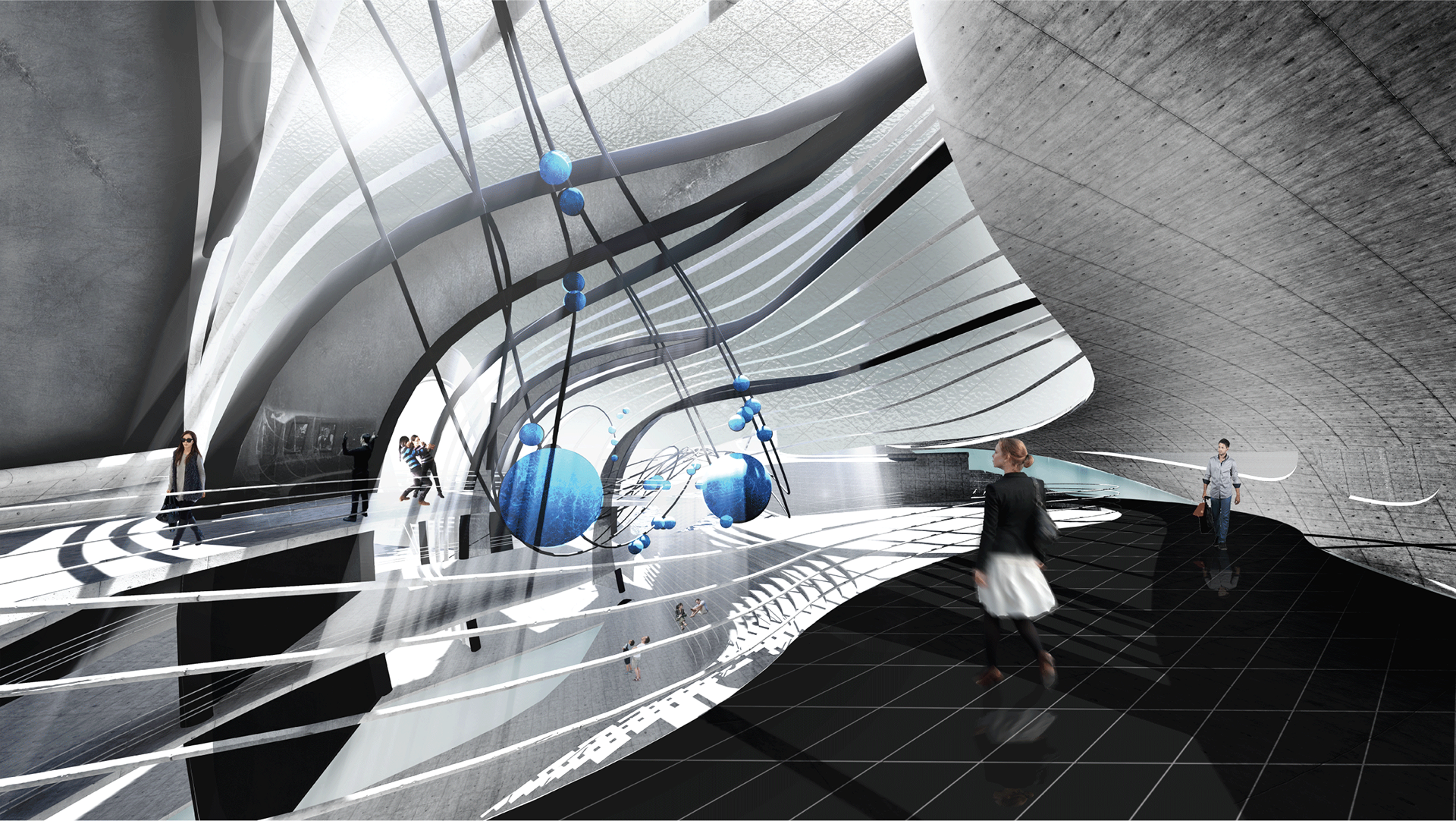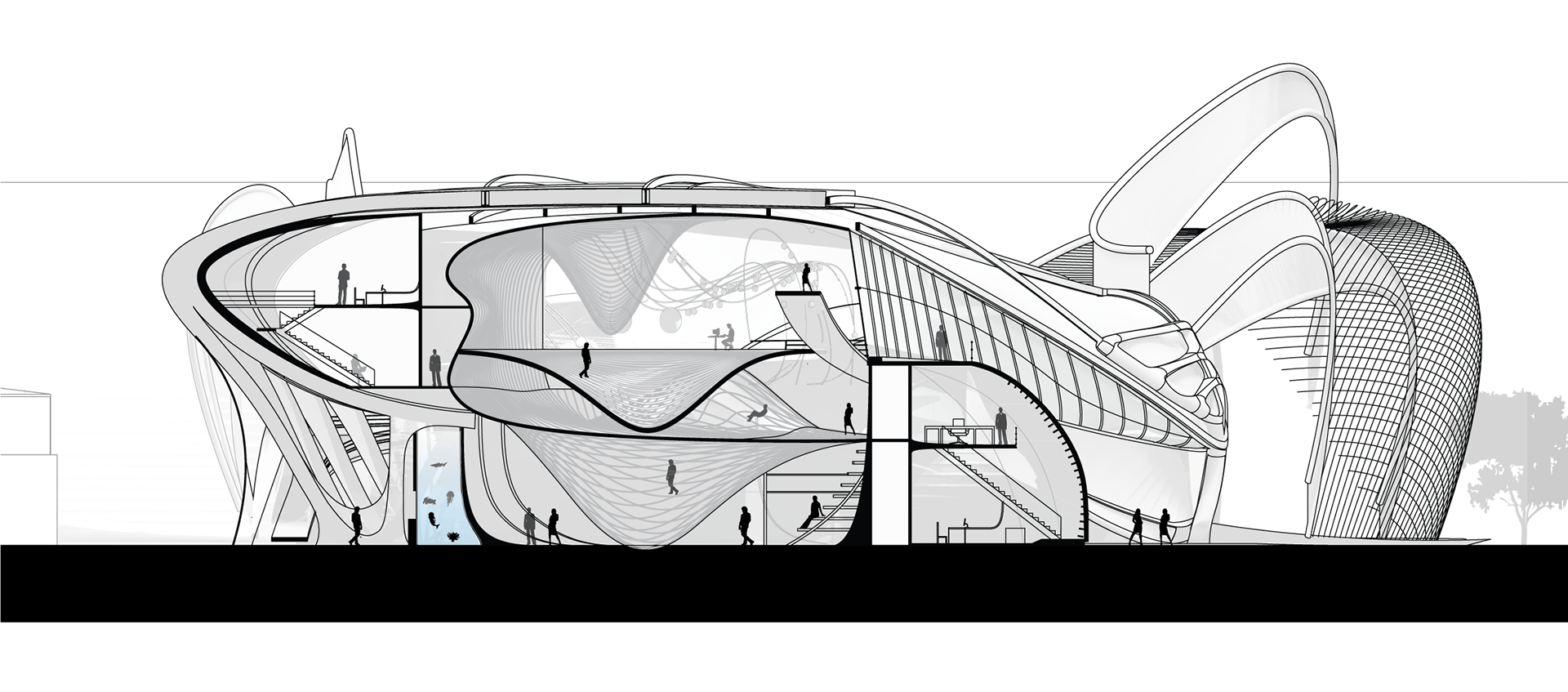






Institute for Aquatic Genetic Modification - Ft Lauderdale, FL Initiating the assignment with a series of research and explorations on DNA and evolutionary traits, four species of fish were chosen. Each having their own unique characteristics and abilities, provided individual tectonics to their function. All of them, however, shared broad similar traits, such as ability to move, see, skeletal formations and feeding patterns. Models were made to replicate how the fish would look and each of their traits were adjustable according to a shared tectonic system that allowed traits to be mixed and matched among the four different species. Combinations were explored and a new species was formed by combining the body parts, allowing for new functions to emerge. This concept of modification was then to be translated onto architecture to create an Institute of Aquatic Genetic Modification. Using the learned traits as inspiration, and advantages offered by the site, in downtown Fort Lauderdale, the design emerged to mimic the undulating flow of an electric eel’s head movement, the ability to hide and reveal interior spaces, similar to the stonefish’s ability to blend itself to it’s environment; floor slabs that can expand and contract to open access to new spaces, came from the pufferfish’s ability to self inflate and create a hollow space in it’s interior; and the siphonophore’s ability to produce bioluminescence encourage the use of a sustainable idea that works with both water collecting and light coming into the building in the form of glowing water bulbs.






